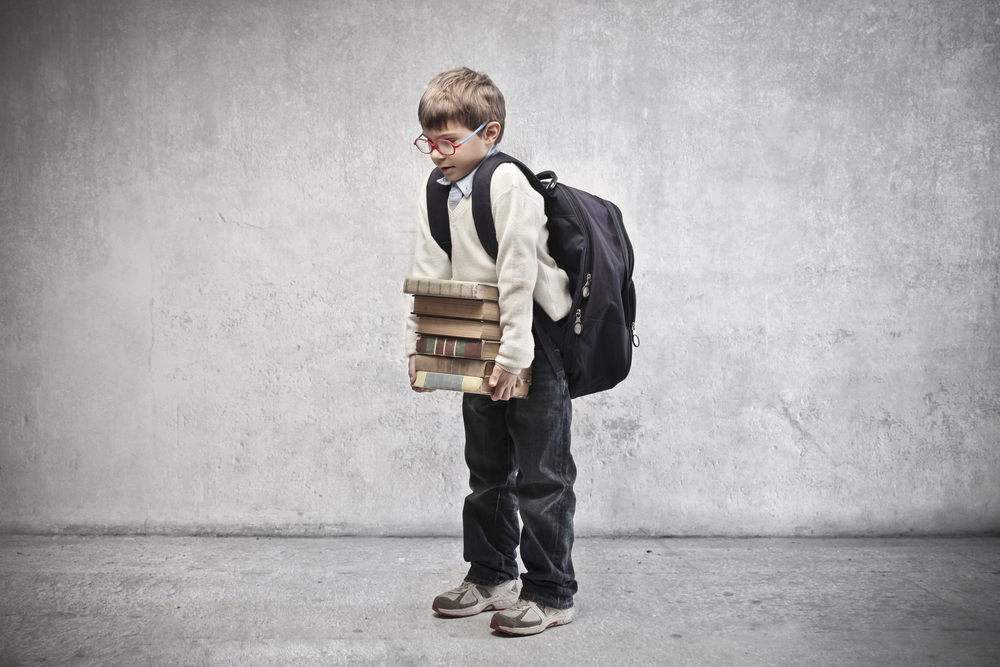The summer holidays provides lots of opportunities for your child to move, play and be active. In contrast, returning to school can mean longer periods of sitting to do classwork or homework, carrying sometimes heavy school bags, and less opportunity for free movement and play. However, there are ways that you can help your child to be able to better manage these changes in their daily activities without putting additional stress on their growing bodies. Read our tips below:
School bags
Making sure your child has a well-fitting and supportive backpack can help to prevent them from experiencing pain or strain during the school year from carrying around their schoolbooks or sports equipment.
To optimize your child’s school bag fitting and usage, follow these tips:
- Choose a backpack with two padded shoulder straps over a bag that is slung over one shoulder. Backpacks are far better to help your child to keep an upright posture. Wearing a bag over one shoulder can contribute to neck, shoulder and back pain.
- Make sure the bag isn’t too big for your child and position the backpack close to and in line with your child’s spine. This will prevent them from leaning forwards of backwards, or rolling their shoulders forwards.
- If possible, choose a backpack that has waist and chest straps. The waist strap takes some of the load off your child’s shoulders and re-distributes it to the hips and pelvis, and the chest straps prevents the shoulder straps from sliding back which can cause your child to lean forwards and round their shoulders.
- Pack heaviest items closest to your child’s back. This keeps the load close to your child and prevents them from leaning forwards and straining their back and neck.
- Try and decease the load in the backpack as much as possible. Use separate folders and books for different subjects so your child only has to take to school what they need, see if they can leave heavy textbooks at school or share the load of textbooks amongst a group of friends (ie: one friend brings the science text book, another brings the math text book) – or even better, see if the materials your child needs are online.
School and homework desks
Your child can spend a lot of time sitting for school, both in the classroom and also at home when doing homework, studying, or completing assignments. Any prolonged posture your child uses can contribute to musculoskeletal pain and strain, especially if their body parts are not ideally positioned.
To optimize your child’s sitting posture you should aim to follow the ’90-90-90 rule’ – aim for your child to sit with a 90 degree angle at their ankles, knees and hips. What this will look like is:
- your child’s feet will be flat on the floor (not hanging, on tippy toes, or not bent under the chair),
- your child’s legs will be supported by the chair seat with their knees above their feet, and
- their trunk should be in a reasonably upright position.
If your child’s feet, legs and trunk are not well supported, your child is more likely to find it difficult to maintain the sitting position and so will fidget or get restless quicker. They are also more likely to find concentrating and completing their work more difficult.
In addition, your child’s desk height should be approximately in line with their elbow height. A table that is too high will cause your child to ‘scrunch’ their shoulders or put their elbows out wide causing tension in their shoulders and neck. A table that is too low will cause your child to lean forwards and lean on the table too much making the fine movements of their hands for writing or typing more difficult.
Some simple tips to help you to achieve the 90-90-90 position at home:
- Use a large phone book or a small step for your child to put their feet on if their feet are not able to sit flat on the floor
- Choose a child sized desk, rather than an adult sized desk, as these are more likely to be a better height for your child
- If your child does their homework at the dining table, use a booster seat on the dining chair (and a step under their feet) to bring them up to the right height at the table. Alternatively you could also purchase an adjustable height chair like a Mocka original or soho highchair (https://www.mocka.com.au/baby/highchairs.html) or a Stokke TrippTrapp chair (https://www.stokke.com/en-au/highchairs/tripp-trapp/TT03.html), so that you can adjust the chair and position your child at the correct height for the table.
Movement breaks!
Regardless of how well you support your child’s posture using a well-fitting backpack or a fantastically adjusted chair for school and homework – any sustained posture, whether it is optimal or not can contribute to musculoskeletal pain or strain simply because it is sustained! As a result, giving your child plenty of opportunities for movement breaks is just as important as ensuring their postures are optimal.
Our bodies are designed to move. Movement helps to keep our joints loose, keep our muscles long and strong, as well as all other parts of our body healthy. In addition, movement can help to keep our brains alert, which is important for learning and retaining information.
Give your child opportunities for movement and movement breaks by:
- Breaking up long activities into smaller parts, and making sure your child gets a movement break between each smaller part
- Doing some of the homework standing up – try a standing desk, or you could do some of the homework or school work on a whiteboard or easel.
- Use movement to learn – get your child to create shapes with their body, problem solve using real life objects, recite timetables with movement, create songs and actions to remember concepts
- Simply having a movement break if you notice your child is tired or frustrated with their work – having a movement break will help them to reenergize and get their endorphins flowing, ready to have another go at the activity.









